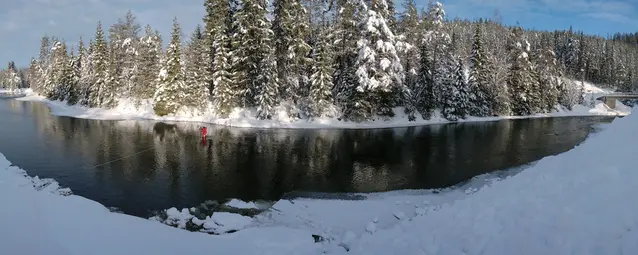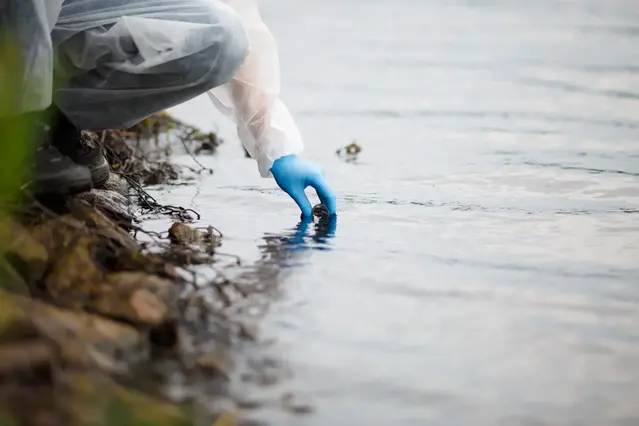What does a hydrologist do at SMHI?
A hydrologist works on important issues related to water on land. At SMHI, there are over a hundred hydrologists. They work on everything from measuring flows in waterways and developing high-tech computational models to conducting environmental assessments and supporting emergency services in flood situations.
Hydrologists can come from various backgrounds. They may have studied to become natural scientists, system developers, engineers, or researchers. It is through the collaboration of SMHI's many different expertise profiles that we can carry out all the complex and life-critical tasks.
Here, you can read about some of the assignments our hydrologists work on.

Daily monitoring of Sweden's water
Every day, SMHI monitors all of Sweden's thousands of lakes, rivers, and waterways. We receive observations from across the country, which our models convert into forecasts.
When our duty hydrologists assess that the forecasts indicate a risk of either water shortages or flooding along any watercourse, they issue warnings. The hydrologists maintain close contact with both the media and essential community functions, such as emergency services, municipalities, and county administrative boards.
A working day at SMHI's Forecasting and Warning Service may involve performing various analyses of the current situation and participating in larger video conferences with different societal actors to report on the day's flow conditions. Hydrologists also work closely with SMHI's duty meteorologists and oceanographers.
In parallel with this, hydrologists are also involved in the long-term development of all the different data models and tools.
Communicating and providing expert advice
At the Information and Statistics unit, you use observations and models to create a comprehensive picture of Sweden's hydrology, both in a historical context and in a changing climate.
These hydrologists also focus significantly on communication, which can involve writing articles for smhi.se, providing training, reporting to international bodies, and responding to government consultations. A major part of the work also involves describing lakes and waterways using various maps.
We have been observing for over a hundred years!
Those working with SMHI's hydrological field operations cover the entire country. We measure water levels and flows in everything from streams to large rivers. Measurements are conducted with technology that is continually evaluated and upgraded.
You can also work in Norrköping with the treasure trove of observations collected over more than a hundred years. The work includes tasks ranging from data review to developing systems for data collection and processing, as well as monitoring new measurement methods.
Below, you can see hydrologist Hanna and her colleagues providing insight into what a hydrologist does at SMHI.
Researching for the entire world
As a hydrological researcher at SMHI, you contribute to the development of water and climate services not just for Sweden, but for all of Europe and the world! At SMHI, approximately 35 researchers from 15 countries work on various water-related issues.
Research may involve calculating future variations in water availability, assessing future hydrological effects of climate change, or using modelling to estimate water quality and flows of various substances in selected geographic areas, known as catchment areas.
The research aims to improve hydrological warning services or forecasts for the hydropower industry, or to provide better data for societal actors to make informed decisions in areas such as environmental work and urban planning.

Consultants assist businesses and municipalities
SMHI also operates a consulting service where our hydrological experts assist businesses and municipalities with crucial decision-making support. This can involve examining how water flows might change in a future climate, or how these flows might affect or be affected by infrastructure projects such as bridges. Consultants may also investigate water quality and provide recommendations for effective measures.
Our consultants can work closely with research to develop new valuable products and support various societal actors by providing training or presenting at conferences.
How to become a hydrologist
There are over a hundred people at SMHI who work in hydrology—the study of water on land. All communities need to have access to sufficient water—but not so much that it poses a risk of flooding! Hydrologists address a wide range of issues related to land water.
